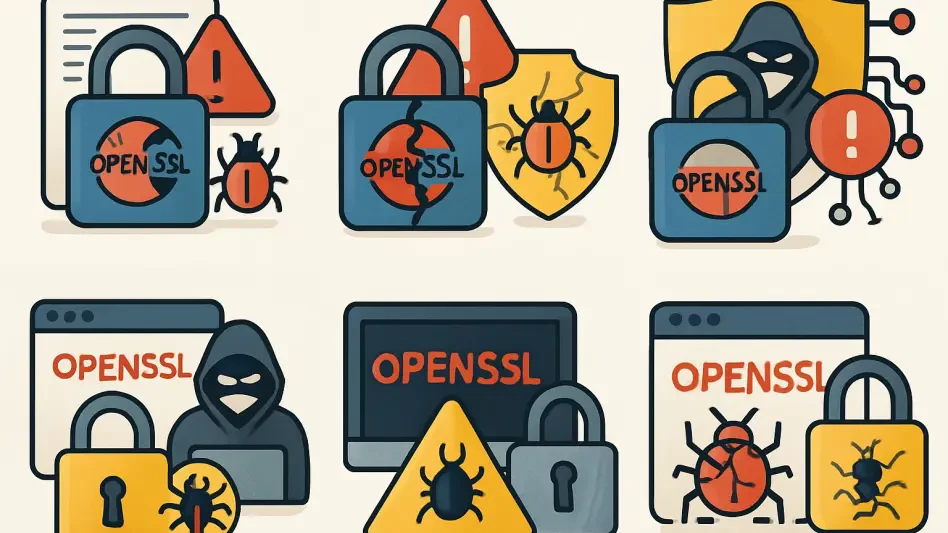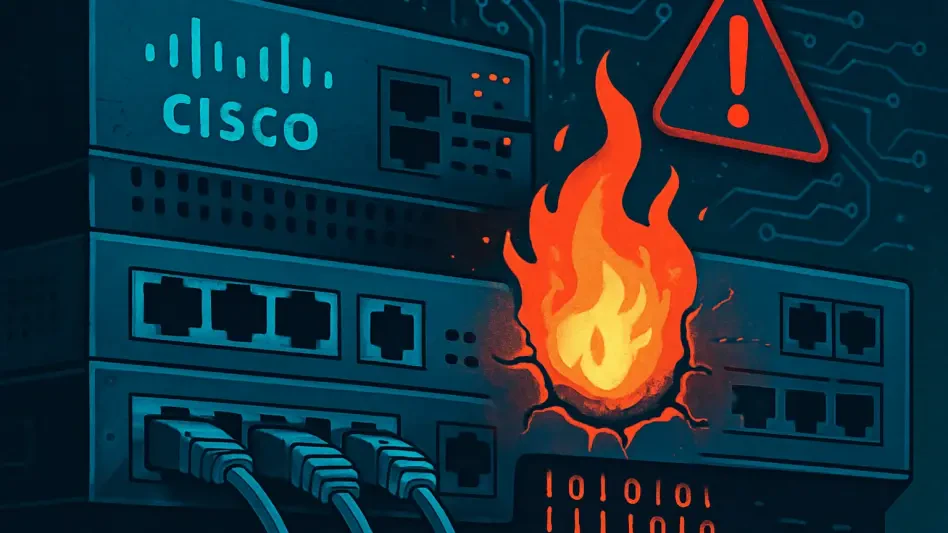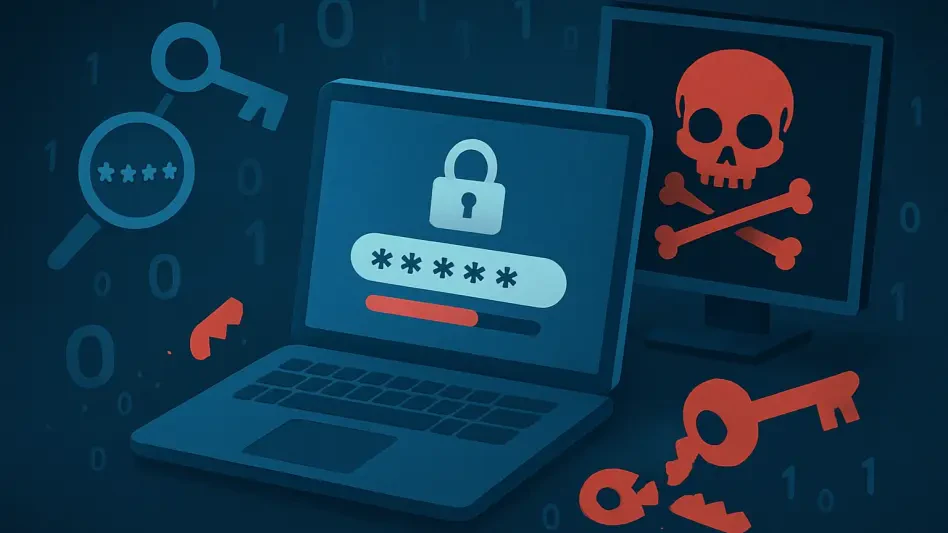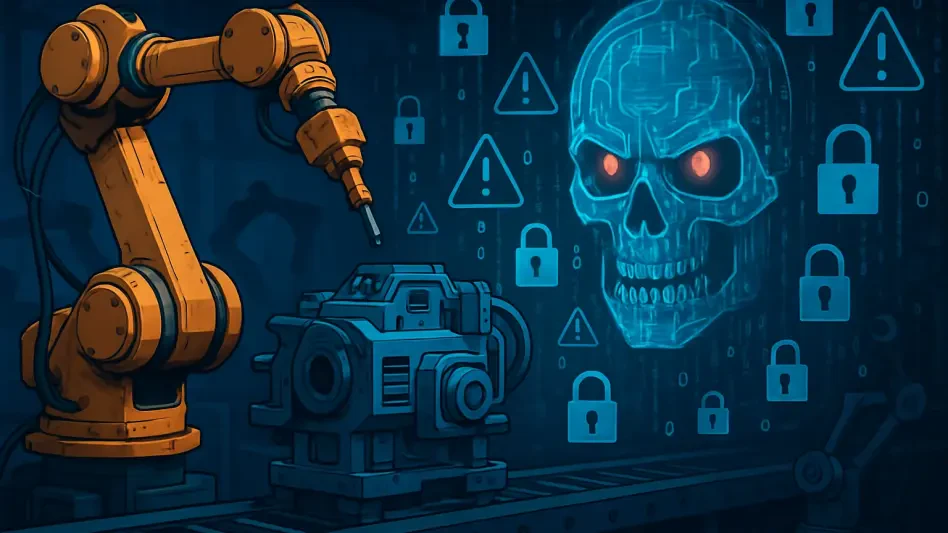The year 2024 has seen an unprecedented level of exploitation of remote access vulnerabilities, particularly in traditional technologies like VPNs. This trend, which began with the rapid adoption of VPNs during the COVID-19 pandemic, has only intensified as threat actors have become more adept at leveraging these weaknesses. To address these vulnerabilities, it is crucial to understand the root causes and implement effective mitigation strategies.
The Rise of Remote Access Vulnerabilities
The Impact of Rapid Deployment During the Pandemic
The urgent need to maintain productivity during the COVID-19 pandemic led to the rapid deployment of remote access technologies, often at the expense of security. Organizations prioritized quick implementation over thorough security measures, resulting in numerous cases of insecure default settings and inadequate patching processes. This rush to set up remote access solutions has had long-lasting consequences, with many systems still vulnerable to exploitation.
The pandemic-induced shift to remote working created a fertile ground for cyber threats. Companies, in their haste to ensure business continuity, overlooked several crucial security protocols. Remote access solutions such as VPNs were rolled out rapidly, often with default security settings that were not robust enough to fend off sophisticated threats. Additionally, the lack of a proper patch management strategy left many systems open to exploitation. These vulnerabilities have persisted into 2024, cementing a complex problem that requires urgent attention to safeguard against recurring cyber threats.
Legacy Systems and Configuration Errors
Many organizations continue to rely on legacy VPN concentrators and other outdated remote access tools. These systems are often plagued by configuration errors and lack ongoing maintenance, making them prime targets for threat actors. The expanded technology estates created during the pandemic have only exacerbated these issues, leading to a significant increase in the exploitation of remote access vulnerabilities.
Configuration errors are particularly problematic because they can create hidden weaknesses in a network’s security posture. For instance, older systems may not be compatible with newer security updates, leaving gaps that can be breached. Additionally, the expansive tech landscape that sprouted during the pandemic has, in many cases, strained IT support and cybersecurity teams, making it harder to spot and rectify vulnerabilities. This has opened up more avenues for attackers, who are continually scanning for such weak points, stepping up the importance of addressing these systemic issues comprehensively.
Major Exploitations in 2024
High-Profile Vulnerabilities and Exploits
In 2024, several high-profile vulnerabilities were actively exploited by threat actors. For example, state-sponsored groups targeted Ivanti Connect Secure and Policy Secure using authentication bypass and command injection vulnerabilities. Similarly, Citrix clients faced urgent patching requirements for code injection and buffer overflow vulnerabilities in Netscaler ADC and Netscaler Gateway appliances. These incidents highlight the ongoing threat posed by remote access vulnerabilities.
The active exploitation of these vulnerabilities significantly impacted various organizations. For instance, the breaches involving Ivy Connect Secure and Policy Secure underscored how sophisticated state-sponsored actors could bypass authentication controls to gain malicious access. Likewise, Citrix’s pressing need for clients to patch their systems highlighted how unpatched vulnerabilities in common tools could be exploited to execute malicious code, disrupting operations and compromising data. These events were not isolated but part of a larger pattern of increased targeting of remote access technologies, emphasizing the need for robust defensive measures.
The Role of Ransomware and Espionage
Ransomware groups and cyber-espionage actors have been particularly active in exploiting remote access vulnerabilities. The Akira ransomware group, for instance, targeted Cisco ASA and FTD appliances using an information disclosure vulnerability that had been patched four years earlier. Meanwhile, the Chinese cyber-espionage group Volt Typhoon breached the Dutch Ministry of Defence by exploiting a heap-based buffer overflow vulnerability in FortiOS SSL-VPN OS. These examples underscore the diverse range of threat actors leveraging remote access vulnerabilities for their gain.
Ransomware attacks demonstrate how even long-patched vulnerabilities remain a threat if not adequately addressed. The Akira group’s targeting of a four-year-old vulnerability indicates a failure in organizations’ patch management processes. On the other hand, the sophisticated breach by Volt Typhoon exemplifies how state-sponsored cyber-espionage can capitalize on obscure vulnerabilities to gather intelligence. Such threats necessitate a proactive approach to continuously review and update security measures, ensuring both recent and historical vulnerabilities are adequately patched and secured.
Mitigation Strategies and Recommendations
Shift Towards Zero Trust Network Access
One effective strategy to mitigate the risks posed by remote access vulnerabilities is the adoption of Zero Trust Network Access (ZTNA). Unlike traditional VPNs, ZTNA does not expose remote access concentrators directly and only requires outbound traffic. This approach significantly reduces the impact of misconfigurations and zero-day vulnerabilities, even in the absence of robust patching policies.
ZTNA frameworks operate on the principle that no user or device should be inherently trusted within or outside the network perimeter. This model stands in stark contrast to traditional VPNs that often trust internal network traffic by default. ZTNA requires verification of every access request, continuously assessing the security posture of users and devices. This persistent scrutiny, coupled with the principle of least privilege, ensures that access is strictly controlled and monitored, thereby mitigating the risks posed by external and internal threats alike.
Benefits of ZTNA
ZTNA allows for the secure publishing and segmenting of resources located in local data centers or clouds. By minimizing the chance for threat actors to find and exploit vulnerabilities, ZTNA ensures that inbound services remain closed off to external probing. This reduces the probability of exploitation incidents and provides a more secure remote access environment.
One of the key advantages of ZTNA is that it significantly reduces the attack surface. By eliminating direct exposure to the internet, ZTNA minimizes the chances for threat actors to even detect the presence of crucial resources. Furthermore, the segmented access ensures that even if one segment is compromised, the rest of the network remains protected. This layered defense mechanism is essential for modern network security, particularly in an era where remote work is prevalent, and the potential attack vectors are constantly evolving.
Importance of Timely Patching
The Consequences of Delayed Patching
Throughout 2024, numerous vulnerabilities were actively exploited because organizations failed to apply available patches promptly. This indicates a critical need for better patch management processes. Many of the exploited vulnerabilities had existing patches that were not implemented in time, facilitating successful attacks. Developing and adhering to a rigorous patch management protocol is crucial for protecting against known vulnerabilities.
The consequences of delayed patching can be severe, leading to data breaches, operational disruptions, and financial losses. When patches are available but not applied, it leaves a window of opportunity for attackers to exploit known weaknesses. This negligence not only impacts the specific organization but can also have a cascading effect on partners, clients, and the broader industry. Therefore, a reactive approach to patching is insufficient; organizations must adopt proactive measures to ensure all systems are continuously updated and secured against potential threats.
Implementing Effective Patch Management
Organizations must prioritize timely patching to mitigate the risks associated with remote access vulnerabilities. This involves regularly monitoring for new patches, promptly applying them, and ensuring that all systems are up to date. By maintaining a proactive approach to patch management, organizations can significantly reduce their exposure to potential exploits.
Effective patch management also involves automating certain processes to ensure patches are uniformly and quickly applied across all systems. Regular audits and vulnerability assessments are crucial to identify and rectify any gaps in the patching process. Additionally, fostering a culture of security awareness within the organization can help in recognizing the importance of timely updates and the roles individuals play in maintaining overall cybersecurity health. By embedding these practices into the organization’s routine, the likelihood of overlooking crucial updates can be minimized.
Strengthening Default Security Settings
Revisiting Initial Configurations
Many remote access solutions were initially deployed with insecure default settings to expedite productivity gains during the pandemic. An essential step in mitigating future risks involves revisiting these configurations and ensuring they meet current security standards. Organizations must regularly audit and tighten these settings to avoid providing threat actors with easy entry points.
Configuration reviews should be an ongoing process, ensuring that as new threats emerge, security settings are adjusted accordingly. Older systems, deployed rapidly during the pandemic, may still be running with outdated or poorly configured settings. These systems should undergo thorough security assessments to identify and rectify potential vulnerabilities. Furthermore, incorporating security baselines and hardening guides can standardize secure configurations across an organization, reducing the risk of misconfigurations leading to exploitable vulnerabilities.
Enhancing Security Posture
Strengthening default security settings requires a comprehensive approach that includes regular audits, updates, and adherence to best practices. By continuously improving their security posture, organizations can better protect their remote access solutions from exploitation and reduce the likelihood of successful attacks.
Enhancing security posture involves not just technical measures but also organizational policies and training. Employees should be educated about the significance of robust security configurations and the potential risks of neglecting them. Regular security training and awareness programs can empower staff to identify and report configuration anomalies, contributing to a more secure environment. Moreover, establishing a feedback loop where lessons learned from incidents are used to continually refine and improve security settings ensures an adaptive and resilient security posture.
Enhanced Vendor and Security Collaboration
The Role of Vendors in Vulnerability Management
Continuous collaboration between security vendors and organizations is integral to managing vulnerabilities. Vendors must ensure they promptly disclose flaws and provide mitigation strategies, while organizations need to act swiftly on such advisories. Shared intelligence and collective initiatives to understand and combat new attack techniques will strengthen the overall cybersecurity landscape.
Vendors play a crucial role in the ongoing fight against cyber threats. By committing to timely and transparent communication regarding vulnerabilities and mitigation measures, they enable organizations to protect themselves more effectively. Additionally, vendors can provide valuable insights and tools that help organizations implement patches and security measures efficiently. Collaboration extends beyond mere disclosure to actively working together to forecast potential vulnerabilities and developing preemptive strategies to counter them.
Building a Collaborative Security Ecosystem
Fostering greater collaboration between vendors and businesses involves establishing clear communication channels, sharing threat intelligence, and working together to develop effective security solutions. By building a collaborative security ecosystem, organizations can better anticipate and neutralize potential threats before they cause significant damage.
A collaborative security ecosystem is characterized by mutual trust and proactive information sharing. Organizations should engage with industry groups and consortiums that facilitate the exchange of threat intelligence and best practices. This collective approach allows for a broader understanding of emerging threats and a more unified defense mechanism. Furthermore, real-time collaboration during an incident can significantly reduce response times and mitigate the impact of security breaches, fostering a stronger, more resilient cybersecurity community.
Conclusion
The year 2024 has witnessed an unprecedented surge in the exploitation of remote access vulnerabilities, especially in traditional technologies like VPNs. The rapid adoption and reliance on VPNs during the COVID-19 pandemic laid the groundwork for this trend. Over time, threat actors have steadily become more adept at exploiting these vulnerabilities to compromise systems. This situation has escalated as cybercriminals continue to refine their techniques, making it more challenging for organizations to safeguard their networks.
To effectively address these vulnerabilities, it is critical to delve deep into their root causes. This understanding can help in developing and implementing comprehensive mitigation strategies. Organizations must stay vigilant and proactive in identifying potential weaknesses in their remote access technologies. They should adopt a multi-layered security approach, regularly update their systems, and conduct thorough risk assessments to prevent breaches. Providing cybersecurity training for employees also plays a vital role in enhancing overall security posture. By tackling the issue from multiple angles, organizations can better protect themselves against this growing threat.







